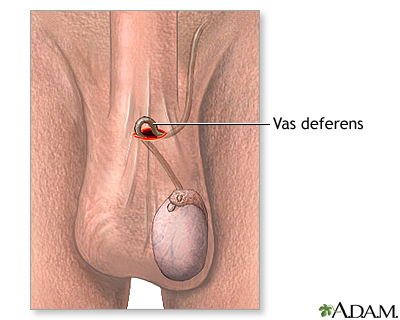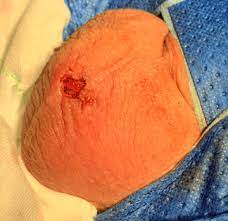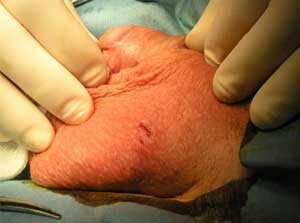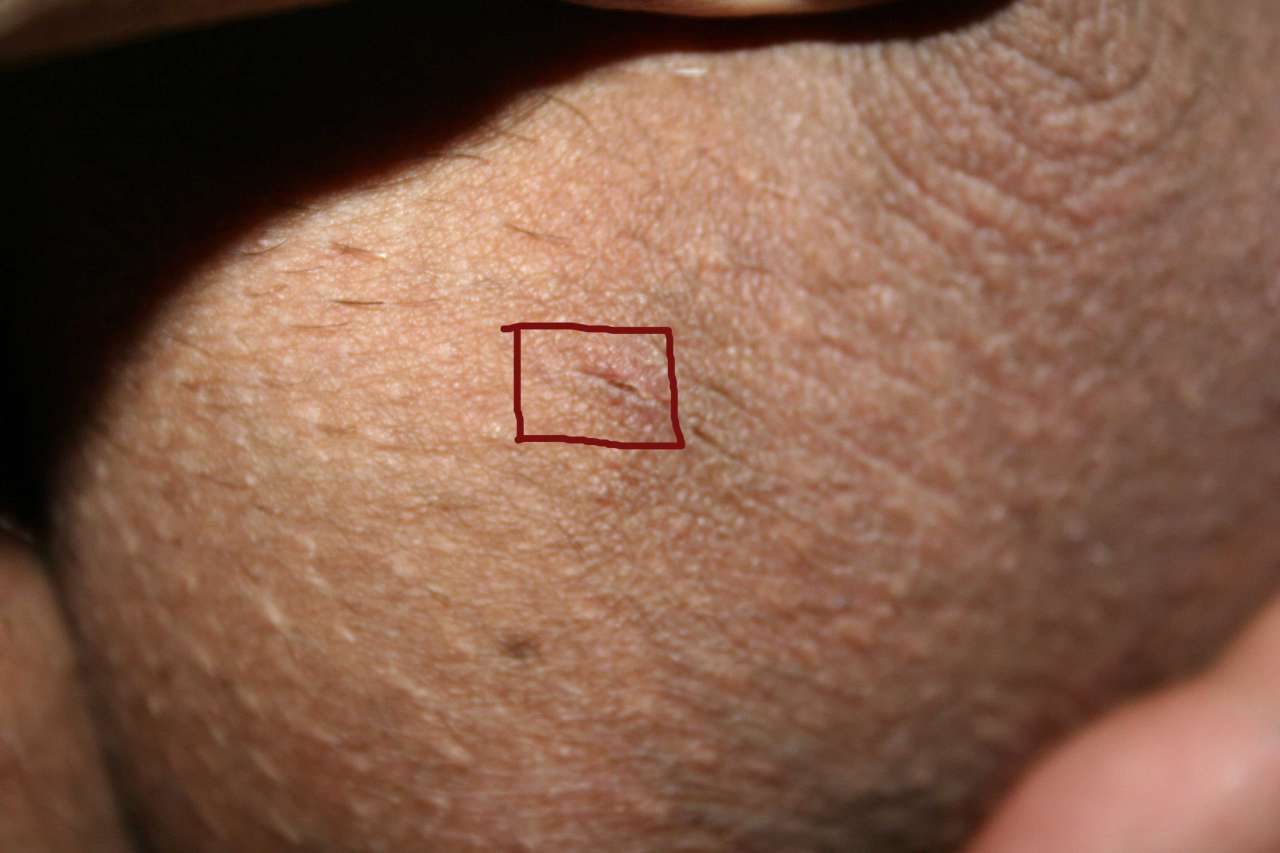A vasectomy scar is usually small and discreet, often fading over time to become nearly invisible. The size and appearance of the scar depend on the type of vasectomy procedure performed and individual healing factors. Most vasectomy scars are less than a quarter-inch long, and some may be virtually undetectable after full healing.
A vasectomy scar is often difficult to detect with the naked eye. Most men report minimal scarring, with some noticing only a faint line or dot where the incision was made.
This subtle appearance is largely due to advancements in surgical techniques, particularly the no-scalpel vasectomy, which minimizes tissue damage and promotes faster healing.
Recommended: Can Ejaculating Too Soon After a Vasectomy Damage It?
Now, let’s delve into the details of what you can expect regarding vasectomy scars, including healing processes, scar appearance, and care tips to ensure the best possible recovery.

Understanding the Types of Vasectomy Procedures
There are two main types of vasectomy procedures: the conventional vasectomy and the no-scalpel vasectomy. Each method results in different scarring.
1. Conventional Vasectomy Scars
In a conventional vasectomy, the surgeon makes one or two small incisions in the scrotum to access the vas deferens. The vas deferens are cut, and a small section is removed. The ends are then sealed, typically using stitches, cauterization, or surgical clips. The incisions are closed with dissolvable stitches.

Appearance of Conventional Vasectomy Scars:
- Size: The scars from a conventional vasectomy are typically about 1-2 cm in length.
- Location: They are located on the scrotum, usually in a spot where natural skin folds help conceal them.
- Healing: These scars may be slightly more noticeable immediately after surgery but often fade significantly over time.
Recommended: How Long After Vasectomy Can I Drink Alcohol?
2. No-Scalpel Vasectomy Scars
The no-scalpel vasectomy (NSV) is a minimally invasive technique. Instead of making incisions, the surgeon uses a sharp instrument to puncture the skin of the scrotum. The vas deferens are then accessed, cut, and sealed similarly to the conventional method.

Appearance of No-Scalpel Vasectomy Scars:
- Size: The puncture site is typically less than a quarter of an inch.
- Location: Like the conventional method, the puncture is made in a discreet area of the scrotum.
- Healing: These tiny puncture marks usually heal quickly and are often difficult to detect after healing.
Factors Influencing Scar Appearance
Several factors can influence how a vasectomy scar looks:
- Skin Type: Individuals with different skin types may heal differently. For example, those with darker skin tones may develop more noticeable scars compared to those with lighter skin tones.
- Healing Process: Proper post-operative care, such as keeping the area clean and following medical advice, can influence scar appearance. Infection or complications can lead to more prominent scarring.
- Age: Younger individuals tend to heal faster and more efficiently, potentially resulting in less noticeable scars.
- Surgeon’s Skill: The technique and experience of the surgeon play a crucial role. An experienced surgeon may create smaller, less noticeable scars.
Immediate Post-vasectomy Appearance
Immediately after a vasectomy, the area around the incision or puncture may be swollen and bruised. This is a normal part of the healing process and should subside within a week or two.

Initial Signs:
- Swelling: Mild to moderate swelling is common and should decrease within a few days.
- Bruising: Bruising around the scrotum is typical and usually resolves within two weeks.
- Stitches: In the case of a conventional vasectomy, dissolvable stitches will be visible initially.
Long-Term Post-vasectomy Scar Appearance
Over the long term, vasectomy scars tend to fade and become less noticeable. The final appearance of the scar depends on the factors mentioned above, but generally, these scars are small and blend well with the surrounding skin.

Final Outcome:
- Fading: Most vasectomy scars will fade to a thin line or dot that is the same color as the surrounding skin.
- Texture: The texture of the scar may be slightly different from the surrounding skin, but this difference is usually minimal.
- Visibility: After a few months, the scars are often hard to see without close inspection.
Recommended: Do Men Still Feel Pleasure After a Vasectomy?
Tips for Minimizing Vasectomy Scar Appearance
To ensure the best possible healing and minimize scar visibility, follow these tips:
- Follow Post-Operative Instructions: Adhere to your doctor’s advice regarding wound care, activity restrictions, and medication.
- Keep the Area Clean: Proper hygiene can prevent infection, which can worsen scarring.
- Avoid Strenuous Activities: Refrain from heavy lifting or vigorous activities for the recommended period to avoid straining the area.
- Use Scar Treatments: Over-the-counter scar treatments, such as silicone gel or sheets, may help improve the appearance of the scar.
- Stay Hydrated and Eat a Balanced Diet: Proper nutrition aids in the body’s healing process.
Recommended: Will I Last Longer After a Vasectomy?
Comparing Vasectomy Scars with Other Surgical Scars
When comparing vasectomy scars to other surgical scars, such as those from appendectomies or hernia repairs, vasectomy scars are generally smaller and less noticeable. This is primarily due to the minimally invasive nature of vasectomy procedures and their location on the scrotum, where skin texture and natural folds help to conceal scars.
Recommended: What Happens at a Vasectomy Consultation?
Psychological Impact of Vasectomy Scarring
While vasectomy scars are typically minor, some men may still feel self-conscious about them. Understanding that these scars are small, often barely noticeable, and a normal part of the healing process can help alleviate concerns.
Discussing any anxieties with your doctor can provide reassurance and additional support.
Conclusion
A vasectomy scar is usually a small, discreet mark that fades over time. The appearance depends on the type of procedure, individual healing factors, and post-operative care. Whether you opt for a conventional or no-scalpel vasectomy, the resulting scars are generally minor and often difficult to detect in the long term.
By understanding the process and following proper care instructions, you can minimize the appearance of scars and enjoy the benefits of a vasectomy with confidence.
